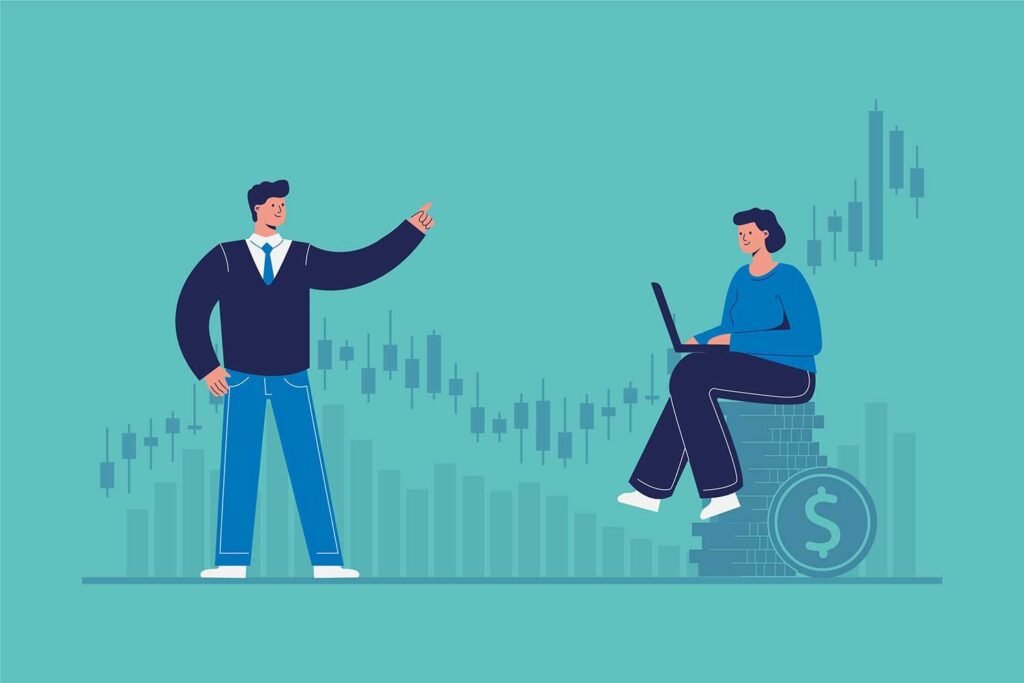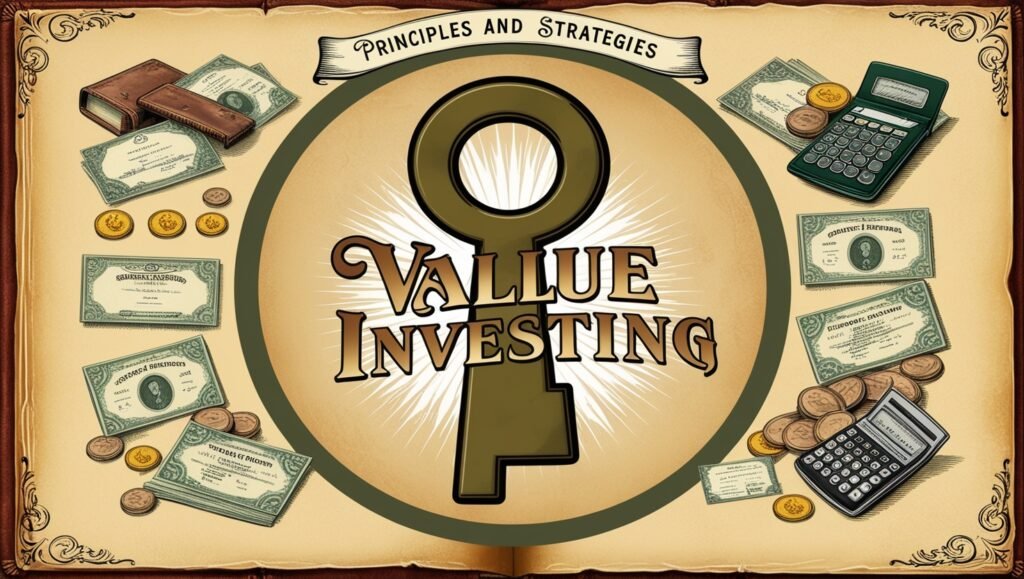Can’t decide between patiently holding stocks or actively trading the market? The long term debate between buy-and-hold and active trading strategies has raged for years, with passionate views on both sides.
What if you could know exactly which approach might increase your returns while fitting your lifestyle and risk tolerance?
In this comprehensive guide, we’ll dive deep into the advantages and disadvantages of buy-and-hold vs active trading strategies. By the end, you’ll have the knowledge to confidently select the best method for your financial goals.
Let’s explore these two powerful investment ideas and find out which one could be the key to your financial success.
Buy and Hold Strategy

Buy and hold is a long term investment approach that involves buying securities and keeping them for an extended time, no matter short-term market changes.
This strategy believes markets mostly trend up over time and allows investors to benefit from overall economic growth and compound returns.
Unlike active trading, buy-and-hold investors trade minimally, focusing instead on choosing quality assets and maintaining a diverse portfolio.
Advantages
Buy and hold investing provide many advantages:
- Lower transaction fees from rare trading
- Historically proven returns, specially when investing in broad indexes
- Possible tax gains from long-term capital increases
- Less time-intensive and allows investors to focus elsewhere
Disadvantages
Despite its good points, buy and hold investing has some disadvantages:
- Needs significant emotional discipline and patience
- Missed opportunities for short-term returns
- Exposure to prolonged market downturns
The ongoing buy and hold vs active investing debate continues shaping theories, with each approach having distinct pros and cons for investors to consider.
Active Trading Strategy

Active trading means a short-term investing approach with frequent buying and selling of securities. Unlike buy and hold strategies, active traders want to profit from short-term price changes in the market.
They closely track market trends, news, and technical signs to make fast moves. This strategy requires constant attention and deep understanding of market dynamics.
Active traders use different techniques such as scalping, day trading or swing trading to capitalize on market inefficiencies. They may hold positions for minutes, hours or a few days on the basis of their specific approach.
The goal of this strategy is to outperform the market and make many small gains that accumulate over time.
Advantages
Active trading has some potential advantages:
- May generate returns in both rising and falling markets
- Shot at higher short-term returns
- Flexibility to quickly adapt to changing conditions
- Can profit from market trends
Disadvantages
However active trading also has big challenges:
- Needs extensive market skills and analysis abilities
- Higher transaction fees from frequent trades
- More time needed for market research and trade execution
- Higher risk of losses from emotion and volatility
- Potential for higher taxes on short-term returns
When comparing buy and hold vs active investing strategies, it’s very important to carefully consider these pros and cons before selecting an approach.
Comparing Performance
To better understand the strengths and weaknesses of buy and hold vs active trading approaches, let’s analyze their performance across different factors.
Historical Returns

Over long periods, buy and hold strategies have often outperformed active trading. Many passive index funds have beaten actively managed funds.
However, skilled active traders can sometimes get higher returns during specific shorter time frames or market states.
Risk Assessment
Buy and hold strategy generally provides lower volatility cause of its long term focus. Active trading can be riskier with more frequent price changes.
Diversification is very important for both approaches, but buy and hold strategy naturally spreads risk over time, while active traders must regularly diversify their portfolios.
Time and Effort Required

Buy and hold strategy needs less time, fitting investors with busy lives. Just periodic reviews and initial research are needed. Active trading requires constant market tracking and analysis. It’s time-intensive and needs ongoing education to stay competitive.
The choice between these strategies usually depends on an investor’s available time and willingness to regularly engage with the market.
Factors to Consider When Choosing a Strategy

When deciding between buy and hold or active trading approaches, many significant factors come into play:
Time Available: Evaluate how much time you can put into investing. Buy and hold needs less daily attention but active trading requires constant market monitoring and analysis.
Investment Aims: Consider your money goals. Are you going for long-term wealth building or short-term profits? Buy and hold strategy works for those with a long view, while active trading strategy may appeal if someone wants fast gains.
Financial Understanding: Be honest about your understanding of market changes. Buy and hold strategy is usually simpler while active trading requires in-depth knowledge of different analysis methods and techniques
Risk Appetite: Assess your comfort with market changes. Buy and hold investors have to ride out down markets, while active traders face more frequent price swings.
Your choice should match your personal situation and money aims. Remember, there’s no one perfect approach for every investor.
Hybrid Approaches
Some investors blend buy and hold and active investing strategies. This blended strategy aims to get the benefits of both while minimizing the disadvantages.
One popular hybrid approach is the core-satellite setup. Here, most of the portfolio (the core) goes into low-cost and passive index funds for long-term gains. A smaller part (satellites) is actively managed for higher returns or short-term opportunities.
Another hybrid strategy is periodic rebalancing. This means regularly reviewing and adjusting your portfolio to maintain target asset allocations. It allows you to benefit from long-term market growth while adapting to changing conditions.
By blending these strategies, investors can potentially get more flexible and personalized management of their investments.
Additional Considerations
There are some other important factors to consider, when comparing buy and hold vs active trading approaches. Let’s discuss key factors that can affect your investment method.
Tax Implications
Buy and hold investing usually has lower tax considerations. Long-term capital returns are typically taxed at a lower rate than short-term gains. Active traders may have more taxes due to frequent trading.
However, they can use tax-loss harvesting to offset gains. This means selling losing investments to reduce taxable income. Both these strategies have tax pros and cons.
Technology and Trading Tools

Technology has changed investing for both approaches. Active traders use real-time data and advanced charting to make quick decisions.
For buy and hold investing, robo-advisors provide low-cost to automated portfolio management. They use algorithms to invest in passive index funds and make long-term investing more accessible and simpler.
Psychological Factors
Investing needs emotional discipline, irrespective of the strategy. Buy and hold investors need to resist selling when markets drop. Active traders must handle the stress of constant decision-making.
Both approaches can fall victim to behavioral biases such as fear of loss or overconfidence. Understanding these psychological factors is very important for investing success.
Conclusion
The debate continues between buy and hold vs active investing and each strategy has unique pros and cons. Your decision must be on the basis of your financial goals, risk appetite and personal situation.
Buy and hold investing suits those who want to get long-term growth with less involvement. Active trading appeals to investors who are comfortable with frequent market changes and higher risk. Consider combined approaches to get benefits of both. Remember, investing success needs ongoing flexibility, education and discipline.
As you develop your strategy, don’t forget long-term financial planning. To learn more about securing your future, see our blog post on retirement investing. It’s a great next step for a comprehensive investment strategy.


